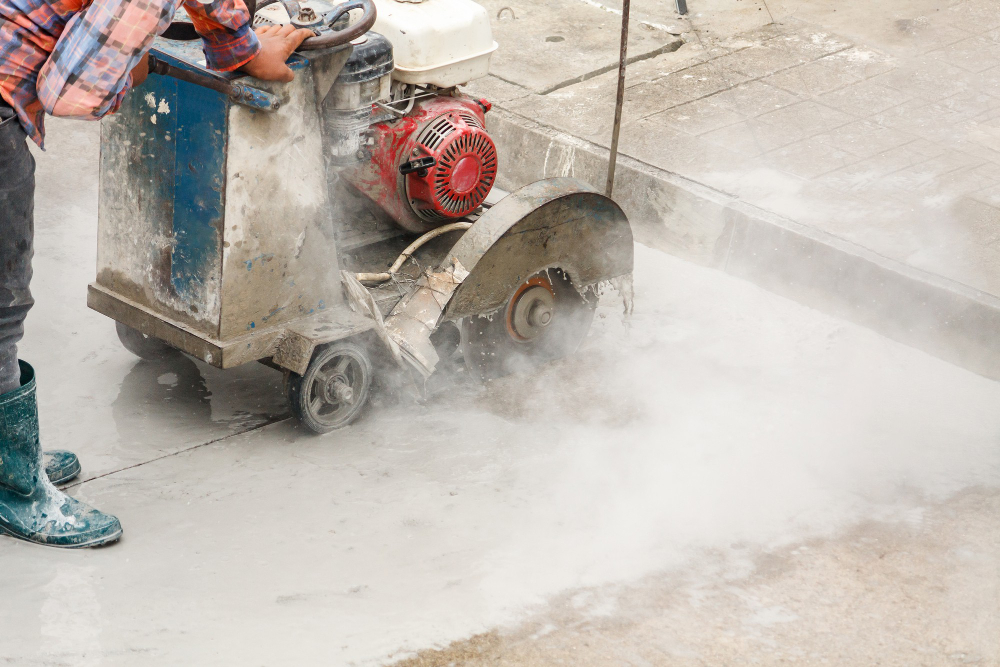Last updated on
Have you ever been on a construction job site and noticed all the dust flying around from the concrete work? This is a common sight and often causes many headaches for both workers and supervisors.
Not only can it be hazardous to your health, but it can also contribute to delays in completing jobs due to its capacity for clogging equipment or creating unsafe working conditions. Thankfully, there are methods of extracting concrete dust that are simple enough for any supervisor to implement.
Why Extracting Concrete Dust Is Important

While concrete is an incredibly strong and useful building material, working with it can create a lot of dust. This concrete dust is not only a nuisance to work around, but it can also be harmful to workers’ health. This is why extracting concrete dust is so important.
By using specialized equipment like vacuums and heavy duty dust extractors, workers can prevent the dust from becoming airborne and causing respiratory issues. Additionally, these machines can help maintain a cleaner work environment, reducing the risk of slips, trips, and falls.
What Kind of Equipment You Need to Extract Concrete Dust

If you’re in the business of concrete cutting or drilling, then you know how much concrete dust can be generated during the process. Not only is concrete dust a nuisance, but it can also be a health hazard if proper extraction measures aren’t taken. To extract concrete dust, you’ll need a variety of equipment.
Firstly, you’ll need a high-quality vacuum cleaner with a HEPA filter. This will help to capture and trap even the smallest particles of dust. Additionally, you’ll need a dust shroud attached to your cutting or drilling equipment to capture dust at the source.
Finally, consider investing in a centralized dust extraction system, which can help to reduce the amount of dust in the air and protect the health of your workers.
Assessing the Air Quality Before, During, and after Extraction

Taking steps to ensure the air quality before, during, and after extraction is essential in keeping workers and those in surrounding areas safe. With airborne hazards like dust and gases being released during extraction processes, it’s important to carefully monitor the air quality to assess any potential risks.
By doing so, companies can take necessary precautions to decrease harmful exposure and create a safer work environment. Proper ventilation, air filtration systems, and regular air quality testing are all essential components in maintaining a healthy workplace. Not only does this protect workers, but it also minimizes the impact on the environment.
Tips to Maximize Efficiency When Extracting Concrete Dust

Extracting concrete dust is a crucial task to ensure a safe and efficient work environment. Apart from being hazardous to health, concrete dust can also affect the performance of your machines and tools. To maximize efficiency during this process, it’s essential to use the right equipment and follow some essential tips.
One practical tip is to use a high-powered vacuum system that can easily collect dust from different surfaces. You can also use a dust collector system that can help capture large quantities of dust and other debris, increasing efficiency and safety. Additionally, wearing protective gear such as gloves, masks, and goggles can protect workers from inhaling harmful particulates that concrete dust carries.
Creating a Safe Environment for Workers When Handling Concrete Dust
Working with concrete dust can pose serious health risks to workers, including respiratory issues and lung damage. Employers must create a safe environment for workers when handling concrete dust to ensure their well-being.
This can be achieved through the use of proper ventilation systems and personal protective equipment, such as respirators and goggles. Employers should also regularly monitor air quality and conduct training sessions to educate workers on the potential hazards of concrete dust exposure.
Best Practices for Disposing of Waste Products from an Extracted Job Site
Proper waste disposal is a crucial aspect of any construction project. Not only does it prevent environmental pollution, but it also helps maintain a healthy and safe working environment for all parties involved. When it comes to disposing of waste products from an extracted job site, there are several best practices that one should follow.
First and foremost, it is important to classify waste products according to their types. This makes it easier to determine the right disposal method. Additionally, work with a reputable waste management company that is licensed and trained to handle hazardous materials. This guarantees that the waste products are disposed of in the most responsible and environmentally friendly manner possible.
The Takeaway
Extracting concrete dust is important for not only meeting air quality standards but helping to create a safe environment for workers. By following the guidelines mentioned here you can make sure that your operations conform with local regulations and ensure everyone’s safety in the process.
When it comes to handling and disposing of waste products, the best practices are always worth taking into consideration – making sure everything goes to its intended destination and ensuring nothing gets left behind at the job site. Keeping these tips in mind and incorporating them into your routine will help you keep ahead of any issues related to concrete dust extraction.
Table of Contents




